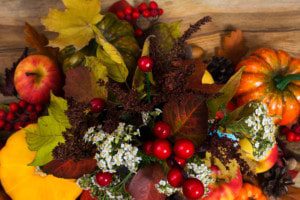 Bug and Weed Mart is thrilled to be offering a new monthly blog on gardening from our friends at Keep Phoenix Beautiful. Mary Lu Nunley is the Garden Manager for the Keep Phoenix Beautiful Community Gardens. Each month she will be offering tips and advice for keeping your garden beautiful. You can also look to us for organic, pet safe ways to control pests in your garden.
Bug and Weed Mart is thrilled to be offering a new monthly blog on gardening from our friends at Keep Phoenix Beautiful. Mary Lu Nunley is the Garden Manager for the Keep Phoenix Beautiful Community Gardens. Each month she will be offering tips and advice for keeping your garden beautiful. You can also look to us for organic, pet safe ways to control pests in your garden.
Getting Your Garden Ready for Fall Plants
It may still be a little too hot to plant your garden, but it is the perfect time to prep your soil for fall plants. Are you starting a garden from scratch – or reviving one from last season? Here are steps to prepare your space for fall, whether your fall plants will be edibles for your family’s table or flowers.
- Check out the soil/dirt by digging up the top six inches. Do you have non-amended dirt, or is it soil that has had compost and topsoil mixed in? Take the time to determine if your soil is clay/caliche, sandy, or just worn out from overuse; you may need to discard the dirt and bring in fresh topsoil.
- Remove any rocks and roots from old plants or grass, and check for pests. (Worms are well worth keeping, if you are lucky enough to have them already.)
- Think about adding a raised barrier to increase the depth of soil to allow a strong root system to develop. To decide the depth of soil you want, consider the length you would like for a carrot plus 2 inches.
- Add compost. Whether you have sandy loam or clay, adding organics (compost) to the soil enriches it, improves drainage in clay soils, and increases water-holding capacity in sandy soils. Compost keeps the soil moist and loose, and allows microbes in the soil to break down the materials in the soil, which feeds the plants.
- Get some worms! Introducing earthworms also helps keep the soil loose and worm castings are a natural fertilizer.
- Choose the right fertilizer for your soil. Fertilizers can enhance gardens, but a soil test is needed to find out what ratio of nitrogen, phosphorus, and potassium is correct for your soil. Remember – what goes into the soil is absorbed into the plants and food crops that go on your table. There is a wide range of organic fertilizers (bone meal, blood meal, earthworm castings, and more) that can be found locally.
If you need more assistance, a Master Gardener at your local University Extension Office is always a good source. In Maricopa County, the number is (520) 549-1173 or email them at MaricopaCountyPlantHotline@gmail.com.
Visit us at KeepPhxBeautiful.org for information on our community gardens, volunteer events, education, and workshop opportunities.
Next month: How to Vermicompost

